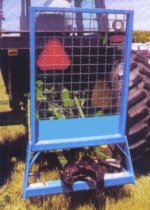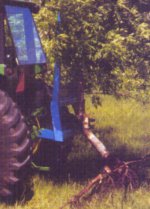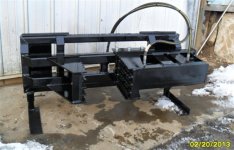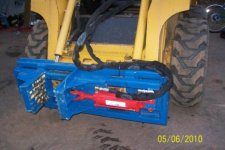IslandTractor
Super Star Member
- Joined
- Sep 15, 2005
- Messages
- 16,647
- Location
- Prudence Island, RI
- Tractor
- 2007 Kioti DK40se HST, Woods BH
Everyone seems to think the weight of the grapple is important. I do not. A few hundred pounds will not affect how much brush you can carry. brush is light. I think the 3/4" tines are plenty thick enough but I would get the extra bottom tine to reduce the distance between the tines to 6 1/2". Large trees are heavy but most likely you will be dragging them anyways unless you have a 30' opening.
Carrying brush, as you point out, is not the issue. Lifting trees and rocks however is an issue and even popping roots can be limited by the force you can apply if the loader has to lift a 600lb grapple rather than a 300-400lb version.
3/4" tines on a CUT grapple just seems like serious overkill. I've never bent the 3/8" tines on my light duty grapple using roughly the same tractor size (Kioti DK40/KL401).





